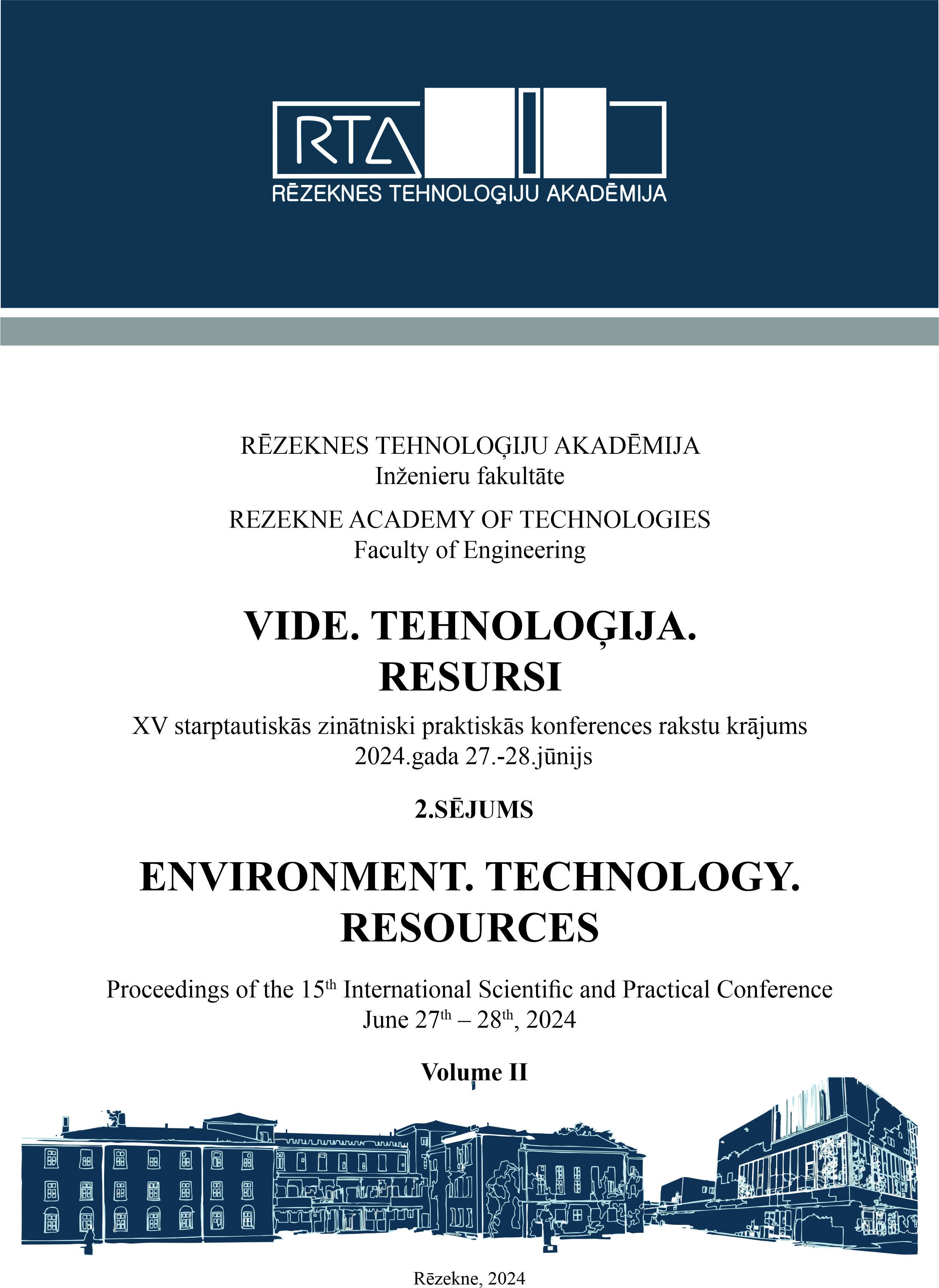NETWORK ATTACK RECOGNITION USING FUZZY LOGIC
DOI:
https://doi.org/10.17770/etr2024vol2.8054Keywords:
artificial intelligence, fuzzy logic system, network traffic analysis, TCP-SYN floodAbstract
The following research paper presents a fuzzy logic system model related to classifying network traffic as malicious or normal. The relevance of the problem stems from the increasingly widespread worldwide problem, namely cyber threats against various companies, organizations, individuals, etc. and at the same time the use of artificial intelligence systems as a means of detecting and preventing various types of cybercrime. To accomplish the task, several basic work methods are followed: first, the development goal is defined - building a fuzzy logic system that supports and automates decision-making about the type of network traffic (malicious or normal traffic), second, appropriate software is selected to perform the task, in this case MATLAB and specifically the Fuzzy Logic Designer toolbox, third, the actual system is built consisting of pre-obtained network traffic inputs that are taken from a pre-collected and compiled .pcap file (the data in it are captured and modified to contain only some network information fields from the set of packets necessary for the experiment to run successfully), the system itself consists of nine input linguistic variables, one output linguistic variable and a knowledge base (the core of the project, namely if-then rules).
The studied system is compared with other similar fuzzy output systems of other researchers. Based on this, it is concluded that the approach proposed in the present work to categorize network traffic, based on pre-selected network information fields, in collaboration with other means of cyber protection gives very good results in the context of cyber security.
The present project proposes a fuzzy inference system to classify network packet types and detect TCP-SYN attack.
The fully built fuzzy source system provides a different perspective to solve the present problem by defining the abstract solution and facilitating the work of specialized personnel charged with such tasks by automating the process of providing an adequate solution regarding the legitimacy of network traffic.
References
K. O. Slavyanov, “Fuzzy logic procedure for drawing up a psychological profile of learners for better perception in courses,” in Proceedings of the 12th International Scientific and Practical Conference, July 20-26, 2019, Rezekne, Latvia: Rezekne Academy of technologies, 2019. Available: http://dx.doi.org/10.17770/etr2019vol2.4073, [Accessed: January, 5, 2024]
L. G. Nikolov and K. O. Slavyanov, “On the contemporary cybersecurity threats”, International scientific journal “Security & future”, vol. 1, pp. 111-113, 2017. Available: https://stumejournals.com/journals/confsec/2017/3/111.full.pdf, [Accessed: January, 10, 2024]
L. G. Nikolov, “Social engineering as a high cybersecurity threat”, International scientific journal “Security & future”, vol. 3, pp. 106-108, 2019. Available: https://stumejournals.com/journals/confsec/2019/3/106.full.pdf. [Accessed: January, 11, 2024].
M. I. Mihailescu, S. L. Nita, M. Rogobete and V. Marascu, “Unveiling Threats: Leveraging User Behavior Analysis for Enhanced Cybersecurity,” in Proceedings of 15th International Conference on Electronics, Computers and Artificial Intelligence (ECAI), June 29-30, 2023, Bucharest, Romania: Institute of Electrical and Electronics Engineers, 2023. Available: https://doi.org/10.1109/ECAI58194.2023.10194039. [Accessed: January, 11, 2024].
B. Singh and A. K. Mishra, “Fuzzy logic control system and its applications”, International Research Journal of Engineering and Technology (IRJET), vol. 02, pp. 742-746, 2015. Available: https://www.irjet.net/archives/V2/i8/IRJET-V2I8104.pdf. [Accessed: January, 12, 2024].
G. Sharma, V. Raju, H. Dhall, P. Sudan, B Reddy, I. Alpackaya, “Fuzzy Logic-Based Energy Management in Smart Grids for Renewable Integration,” International Conference on “Advanced Materials for Green Chemistry and Sustainable Environmen.t” (AMGSE-2024), vol. 511, pp. 1-14, 2024, Available: https://www.e3s-conferences.org/articles/e3sconf/pdf/2024/41/e3sconf_amgse2024_01013.pdf. [Accessed: January. 12, 2024].
R. Shanmugavadivu and N. Nagarajan, “Network Intrusion Detection System using Fuzzy Logic”, Indian Journal of Computer Science and Engineering (IJCSE), vol.2, no.1, pp. 101-111, 2015, Available: https://ijcse.com/docs/IJCSE11-02-01-034.pdf, [Accessed: February, 1, 2024].
L. C. Barros , R. C. Bassanezi , W. A. Lodwick, A First Course in Fuzzy Logic, Fuzzy Dynamical Systems, and Biomathematics: Notions of Fuzzy Logic, Vol. 432. Cham: Springer, 2024, pp. 53-78. https://doi.org/10.1007/978-3-031-50492-1_4.
P. Vähäkainu, M. Lehto, Artificial Intelligence and Cybersecurity: Use of Artificial Intelligence in a Cybersecurity Environment. Cham: Springer, 2022, pp. 3-27. https://doi.org/10.1007/978-3-031-15030-2_1.
M. Soltanifar, H. Sharafi, F. H. Lotfi, W. Pedrycz, T. Allahviranloo, Preferential Voting and Applications: Approaches Based on Data Envelopment Analysis. Studies in Systems, Decision and Control: Introduction to Fuzzy Logic., vol 471. Cham: Springer, 2023, pp.31-45. https://doi.org/10.1007/978-3-031-30403-3_3.
Downloads
Published
Issue
Section
License
Copyright (c) 2024 Angela Borisova

This work is licensed under a Creative Commons Attribution 4.0 International License.



